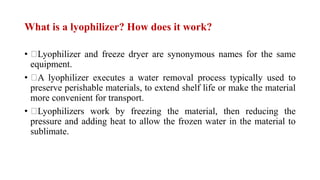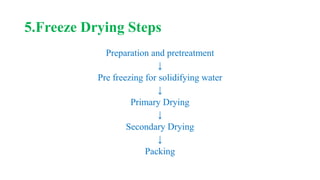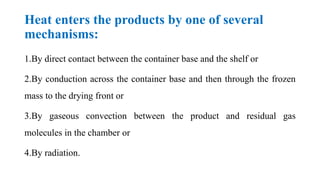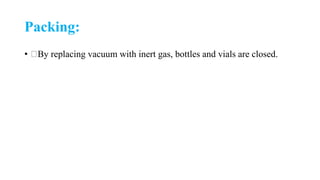A lyophilizer, also known as a freeze dryer, works by freezing materials, reducing the pressure, and adding heat to allow frozen water in the materials to sublimate. The lyophilizer executes a water removal process to preserve perishable materials and extend shelf life by freezing the material and reducing pressure and temperature to allow frozen water to change directly from solid to vapor without passing through the liquid phase. Lyophilizers are used to dry heat-sensitive products, increase shelf life, and reduce weight for storage, shipping and transportation.

















